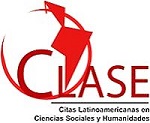Double entry in the United States. Discussions and trends.
Keywords:
Double entry, descriptive accounting, prescriptive accounting, uniform accounting.Abstract
This paper aims to discuss some scientist attempts to relegate to the background the twice-entry methodology in accounting for the United States, taking into account the countable-cultural tensions caused between continental Europe and the US since 1930. The discussion arose between some European countries that tried to consolidate the uniform accounting, and the US, that seek to implement prescriptive accounting. This historical research found that this tension has caused that US reject the uniform accounting, developed in continental Europe, and try to relegate double-entry for benefit of financial reporting. However, it also found that in practice, the double-entry bookkeeping still determines the accounting records in the US, despite the recent theoretical efforts for install a new accounting language through events.
Article Metrics
Abstract: 581 PDF (Español (España)): 241References
BENSADON, Didier. (2011). The accounting regulation in the French context: The case of corporate groups (1921-1943). Accounting History Review Conference, Cardiff: United Kingdom. Disponível em https://hal.inria.fr/halshs-00640504/document,
acesso em 20/06/2015.
BOYS, Peter. (2011). A study of practising accountants listed in London trade directories published before 1840. http://www.icaew.com/~/media/Files/Library/subjects/
accounting-history/Practising-accountants-in-London-before-1840.pdf Acesso em 04/04/2013.
CAYLEY, Arthur. (2009). The Principles of Book-keeping by Double Entry. Cambridge: Cambridge University Press, 1894. Reprinted by BiblioLife, 2009.
COLE, William. Morse. (1908). Accounts their construction and interpretation for business men and students of affairs. Houston: Houghton Mifflin Company.
COX, Benita. (2003). Accountability lost: The rise and fall of double entry. En: Omega – The International Journal of Management Science. Vol. 31 Nº 4. Philadelphia: Drexel University. pp. 303 - 310
DEGOS, Jean-Guy. (2006). Les origines de la normalisation comptable internationale: le rôle des français et des américains. The Certified Accountant Vol. 27, p. 77 – 3rd. Quarter.
DUNN, Cherril. L. & McCARTHY William. E. (1997). The REA Accounting Model: Intellectual Heritage and Prospects for Progress. Internet: https://www.msu.edu/user/mccarth4/DUNN&MC.htm Acesso em 15/05/2013.
EDWARDS, John Richard (1994). Twentieth-century Accounting Thinkers. Edited John Richard Edwards. London: Routledge.
EL ORF, Lazhar. (2012). Différenciation et intégration des systèmes comptables: une étude typologique. Ecole Doctorale Abbé Grégoire. Paris. http://tel.archives-ouvertes.fr/docs/00/77/09/82/PDF/THESE_-_EL_-_ORF_-_Lazhar.pdf Acesso em 03/05/2013.
FEYERABEND, Paul K. (1975). Contra o Método: esboço de uma teoria anárquica da teoria do conhecimento. Trad. Octanny S. da Mota e Leonidas Hegenberg. Rio de Janeiro: Francisco Alves.
GOETHE, Johann Wolfgang. (2007). Wilhelm Meisters Lehrjahre (1795/96) [Wilhelm Meister’s Apprenticeship (1795/96)]. Reprinted: Aegypan, February 1.
GLEESON-WHITE, Jane. (2011). Double Entry: how the merchants of Venice created modern finance. New York: W.W. Norton & Company Ltd.
HAULOTTE, Robert, STEVELINCK, Ernest & HAMBURGER Richard. (1977). A bit of accounting history adding the pages in the journal. The Accounting Historians Journal. Volume 4, N° 2.
HORKHEIMER, Max. (1968). Teoría Crítica I. Trad. Hilde Cohn. São Paulo: Edusp.
IJIRI, Yuji. (1989). Momentum Accounting and Triple-Entry Bookkeeping: Exploring the Dynamic Structure of Accounting Measurements. Studies in Accounting Research N° 31/1989. NAN/AAA. Sarasota: American Accounting Association.
JONES, Edward Thomas. (1796) The English System of Bookkeeping by Single or Double Entry. Tradução livre.
KAPAYA, George. (1999). International Harmonization of Accounting – a case of harmonization for ‘us’ and standardization for ‘you’? (paper synopsis). Critical Perspective on Accounting Conference, New York.
LAUWERS, Luc. & WILLEKENS, Marleen. (1994). Five Hundred Years of BooEeeping A Portrait of Luca Pacioli. Tijdschrift voor Econornie en Management. Vol. XXXIX. 3. http://arno.uvt.nl/show.cgi?fid=72340, acesso em 17/04/2013.
MATTESSICH, Richard. (2003). Accounting research and researchers of the nineteenth century and the beginning of the twentieth century: an international survey of authors, ideas and publications. Accounting, Business & Financial History. Vol. 13, Nº 2.
MATTESSICH, Richard. (2005). A concise history of analytical accounting: examining the use of mathematical notions in our discipline. De Computis. Revista Española de Historia de la Contabilidad, Nº 2, junho.
MATESSICH, Richard. (2013). Accounting Theory of the first half of the Twentieth Century. In: Accounting and Business Economics: Insights from National Traditions. Edited by Yuri Biondi, Stefano Zambon. New York: Routledge.
MATTESSICH, Richard. (1964). Accounting and Analytical Methods: measurement and projection of income and Wealth in the micro-and macro-economy. Illinois: Richard D. Irwin, Inc.
MATURANA, Humberto. (1997). La objetividad: un argumento para obligar. Santiago: Dolmen Ediciones SA.
MAY, George O. (1946). Financial Accounting: a distillation of experience. New York: The McMillan Company.
MAYRHOFER, Dieter. et al. (2004). REA-ERP: Challenges of using in an ERP System. http://publik.tuwien.ac.at/files/PubDat_217080.pdf, acesso em 15/05/2013.
McCARTHY, William. E. (1982). The REA Accounting Model: A Generalized Framework for Accounting Systems in a Shared Data Environment. The Accounting Review Vol. LVII, N° 3 July.
MICHAÏLESCO, Céline. (2010). Jean Dumarchey (1874-1946): une contribution à la théorie du bilan et de la valeur. https://halshs.archives-ouvertes.fr/halshs-00156408, Acesso em 17/03/15.
MUELLER, Gerhard. G. (1965). International Experience with Uniform Accounting. Law and Contemporary Problems. Vol. 30, N° 4, Uniformity in Financial Accounting, Autumn. pp. 850-873.
NEPOMUCENO, Valerio. (1999). O positivo e a neutralidade contábil. Revista de Contabilidade e Comércio Nº 226 Vol LVII, Porto/Portugal. Disponível em: https://www.
researchgate.net/profile/Valerio_Nepomuceno/contributions.
O´LEARY. Daniel E. (2004). On the relationship between REA and SAP. International Journal of Accounting Information Systems 5 65– 81.
OURIEMMI, Ossama. (2008). L´histoire de la normalization comptable en France (1936-1944). Université de Poitiers, Institut d´Administration des Entreprises. http://
www.management.free.fr/publications/Index.htm, acesso em 24/04/2013.
PREVITS, Garity. J. & MERINO, Barbara. (1998). History of accountancy in USA: the cultural significance of accounting. Columbus: Ohio State University Press.
PRIGOGINE, Ilya. (1977). The End of Certainty: time, chaos and news laws of natures. New York: The Free Press.
SATOH, Michimasa. (2000). The Structure and Implications of the Three Dimensional Double Entry Accounting System. http://ocw.nagoya-u.jp/files/336/3D%20Double%20Entry.pdf, acesso em 10/05/2013.
SOMEYA, Kyōjirō. (1996). Preparation of the Cash Flow Statement. Japanese Accounting: A Historical Approach, Oxford: Clarendon Press.
SOMBART, Werner. (1984). Der moderne Kapitalismus.(1902) [El Apogeo del Capitalismo]. Méjico: Fondo de Cultura Económica.
SORTER, George. H. (1969). An “Events” Approach to Basic Accounting Theory. Accounting Review, 44: 1: Jan. p. 12.
SPRAGUE, Charles E. (1972). The Philosophy of Accounts. New York: Scholars Book Co.
STANDISH, Peter. (1990). Origins of the Plan Comptable Général: a study in cultural intrusion and reaction. Accounting and Business Research. Vol 20. Nº 80, 337-351.
http://www.tandfonline.com/doi/abs/10.1080/00014788.1990.9728892#preview, acesso em 23/04/2013.
SCHMALENBACH, Eugen. (1980). Dynamic Balance. Trad. G. W. Murphy e Kenneth S. Most. Britain: Gee & Company. New York: Arno Press.
TOUCHELAY, Béatrice. (2010). Le développement de la normalisation comptable et de la comptabilité nationale en France entre les années 1920 et les années 1960, des
analogies singulières. 15e Journees d’histoire de la Comptabilite et du Management. Universite Paris-Dauphine, Mars.





















